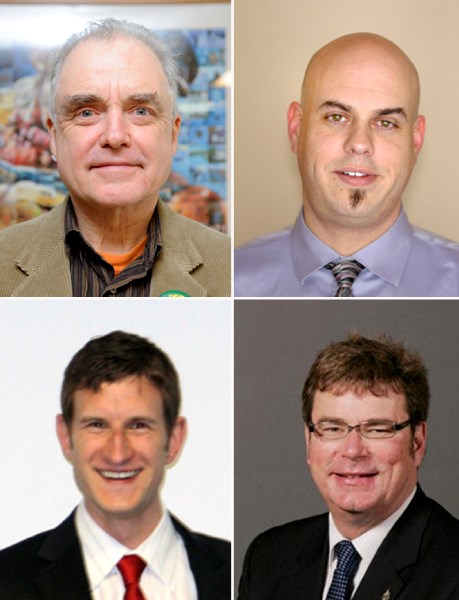You've probably heard of Pat Collins if you're an environmentalist. The Grade 5 teacher at St. Albert's Sir Alexander Mackenzie School has been an active member of the city's environmental community for about 20 years, and is president of the Big Lake Environmental Support Society (BLESS).
Collins says he's concerned about climate change. Burning fossil fuels not only releases carbon dioxide, he notes, but also many other pollutants that contribute to asthma and other diseases.
"It seems to me that it is in the best interest of the health of all of us to cut down on greenhouse gas emissions."
The last government had proposed to cut climate change and clean air program funding by 59 per cent, Collins says, referring to the Mains Estimates released earlier this year, yet also promised to cut its greenhouse gas emissions under the Copenhagen Accord.
His question to Edmonton-St. Albert candidates: "How does the government expect to keep its promise of reducing Canada's greenhouse gas emissions level 17 per cent relative to 2005 [levels] while at the same time cutting climate change and clean air programming by almost 60 per cent?"
Liberals and Conservatives
The Liberals would bring in a cap-and-trade system to reduce Canada's emissions, says party candidate Kevin Taron, with an aim to reduce the country's emissions to 80 per cent below 1990 levels by 2050. A cap-and-trade system is where government sets a total limit on emissions and large companies buy and trade emissions permits under it. The Liberals would also restore a renewable power production incentive and spend $400 million on a permanent green home renovation tax credit.
This policy would set limits on emissions in a way supported by industry, Taron says. Cash collected by the policy would be re-invested locally to reduce emissions, create exportable technologies and local jobs. "The money raised here in Alberta would stay in Alberta."
The Liberals would also immediately end an accelerated capital cost allowance for oilsands producers, he says, netting the government about $500 million over two years to clean up oilsands production. "It makes sense to do this with oil prices at over $100 a barrel."
The Conservative platform, released Friday, notes the party has introduced regulations to reduce emissions from electricity production and brought in stricter emission standards for vehicles. It also committed to reducing emissions to 17 per cent below 2005 levels by 2020 under the Copenhagen Accord.
"Our government's first priority is the economy," writes Conservative candidate Brent Rathgeber in an email. "As a nation rich in natural resources, tens of thousands of jobs depend on our thriving energy sector."
A strong economy and a healthy environment can co-exist, he writes. The Conservatives would boost investments in renewable energy if elected (his party's platform does not provide a dollar amount) and preserve record amounts of parkland for future generations. His party would also phase out the accelerated capital cost allowance for general investment in the oilsands by 2015.
Greens and NDP
The Green Party would reduce emissions by 30 per cent below 1990 levels by 2020, according to the party's Vision Green document, and by 85 per cent by 2040. That document mentions many emissions-related policies, including an end to all oil, coal and gas subsidies, a 50 per cent increase to home energy efficiency retrofit grants and a carbon tax of $50 per tonne of emissions.
Economists agree that a carbon tax is the most efficient way to reduce emissions, says Peter Johnston, local Green candidate. "It's going to put a lot of people off of voting for the Green Party," he admits, but not cutting emissions is not an option.
Carbon taxes work by taxing pollution while reducing taxes in other areas, such as income. "A carbon tax isn't going to rip money out of the economy," Johnson says. "It's just going to move it around." Norway already has such a tax in place and is still has a very high standard of living, he says.
"Why are we subsidizing the biggest and most profitable industry in the world?" he says, in regards to fossil fuel subsidies. His party would shift those subsidies towards renewable power production.
The NDP would do the same on fossil fuel subsidies, says candidate Brian LaBelle. His research suggests that each Canadian provides about $75 of subsidies to oil and gas producers a year.
"I don't believe the subsidies are creating any new jobs. They're just making profitable companies even more profitable." Investing in energy efficiency and renewable power will help Canada meet its emission reduction targets and create new jobs.
The NDP would also bring in a cap-and-trade system, he says, although he could not provide details on how it would work. "We may see a few jobs lost in the oilsands," as a result of the system, he says, but reallocating oilsands subsidies would create new jobs to replace them. "They won't all be in Fort McMurray, but they will be spread out over the province."
Candidates' Corner
Got a question for the candidates? Send it and your contact information to [email protected].




